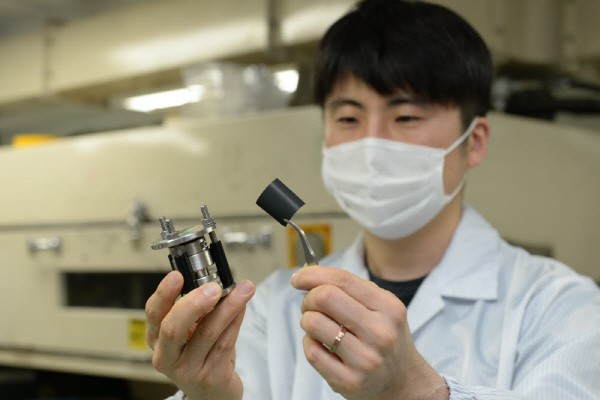Uses only titanium disulfide only without solid electrolyte
1.3 times higher energy density for the same capacity
Higher price competitiveness by using existing manufacturing process
Ion diffusion onl
A domestic research team developed an anode structure for all-solid-state secondary batteries after developing a cathode structure last year.
The Electronics and Telecommunications Research Institute (ETRI, President Myung-jun Kim) announced on July 13 that it developed a new electrode structure using only titanium disulfide (TiS₂) as an active material, without a solid electrolyte to form a positive electrode.
The related performance was published online in Energy Storage Materials last month.
An all-solid-state secondary battery is a next-generation battery that uses a solid as an electrolyte. Solid electrolytes are safe from fire and are favorable to improve energy density as they can make bipolar type secondary batteries (high voltage secondary battery with electrodes connected in series inside).

The all-solid-state secondary battery positive electrode is mainly composed of a conductive material responsible for electron conduction, solid electrolyte responsible for ion conduction, active material that stores energy, and a binder that holds all of them together. When the composition ratio of solid electrolyte is increased, there is a limit in increasing the energy density since fewer active materials are used. Moreover, a composite electrode containing sulfide-based solid electrolyte may react with water to generate hydrogen sulfide gas, making it difficult to select a solvent and binder.
ETRI constructed the positive electrode only with an active material and binder that eliminates gaps between particles, by applying pressure to TiS₂ without a solid electrolyte.
With the help of DGIST (Daegu Gyeongbuk Institute of Science & Technology) joint research team, ETRI verified that lithium ions directly diffuse through TiS₂ particles and realized all-solid-state secondary battery performance even with a cathode structure and no solid electrolyte. ETRI also confirmed that the energy density could be increased by over 1.3 times at the same capacity by increasing the active material content.
The anode structure can greatly contribute to the improvement of all-solid-state secondary battery performance and price competitiveness, as solvent and binder can be chosen freely, and the existing manufacturing process of lithium-ion electrode plate can be used as is.
The research team said they could achieve this result by predicting the theory and verifying the experiment that electrochemical performance could be greatly improved by nanoizing the active material. Experience and know-how in developing cathode structures based on graphite also played a part.
Senior Researcher Young-ki Lee at ETRI's Intelligent Sensor Lab said, "We have verified for the first time that ions can be diffused using only an active material in both the cathode and anode structures. We will secure core source technologies that will further improve energy density and contribute to its commercialization.”
Based on this achievement, ETRI plans to conduct follow-up research on all-solid-state batteries and to conduct research to improve the output characteristics while synthesizing the battery structure.
Daejeon = Staff Reporter Young-jun Kim kyj85@etnews.com